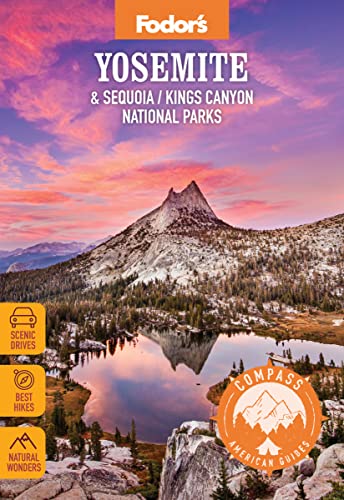Plants and Wildlife in Yosemite
Dense stands of incense cedar and Douglas fir—as well as ponderosa, Jeffrey, lodgepole, and sugar pines—cover much of the park, but the stellar standout, quite literally, is the Sequoiadendron giganteum, the giant sequoia. Sequoias grow only along the west slope of the Sierra Nevada between 4,500 and 7,000 feet in elevation. Starting from a seed the size of a rolled-oat flake, each of these ancient monuments assumes remarkable proportions in adulthood; you can see them in the Mariposa Grove of Giant Sequoias. In late May, the valley's dogwood trees bloom with white, starlike flowers. Wildflowers, such as the black-eyed Susan, bull thistle, cow parsnip, lupine, and meadow goldenrod, peak in June in the valley and in July at higher elevations.
The most visible animals in the park—aside from the omnipresent western gray squirrels, which fearlessly attempt to steal your food at every campground and picnic site—are the mule deer. Though sightings of bighorn sheep are infrequent in the park itself, you can sometimes see them on the eastern side of the Sierra Crest, just off Route 120 in Lee Vining Canyon. You may also see the American black bear, which can have a brown, cinnamon, or blond coat. The Sierra Nevada is home to thousands of these creatures, and you should take all necessary precautions to keep yourself—and them—safe. Bears that acquire a taste for human food can become very aggressive and destructive and often must be destroyed by rangers, so store all your food and even scented toiletries in the bear lockers located at many campgrounds and trailheads, or use bear-resistant canisters if you’ll be hiking in the backcountry.
Watch for the blue Steller's jay along trails, near public buildings, and in campgrounds, and look for golden eagles soaring over Tioga Road.




